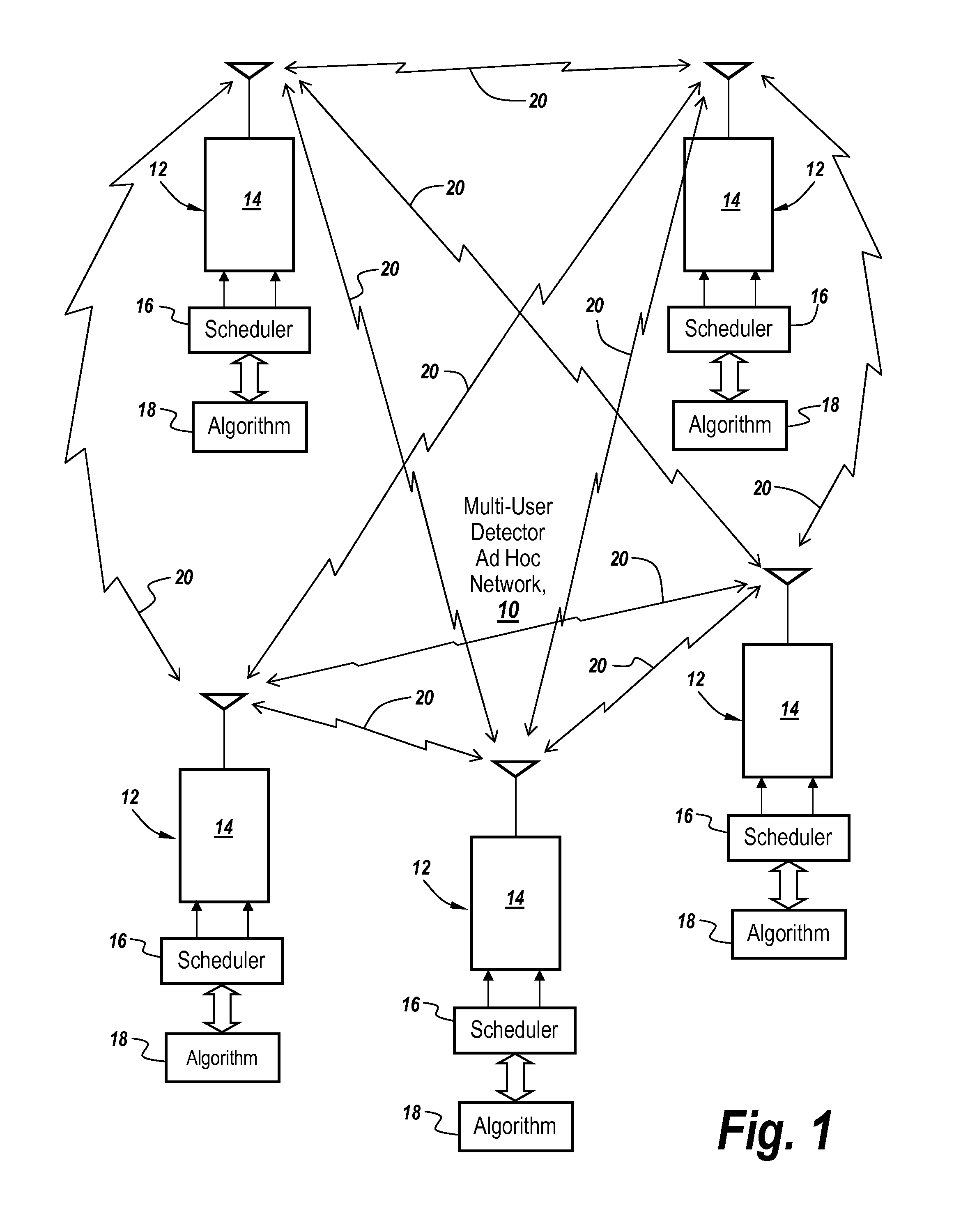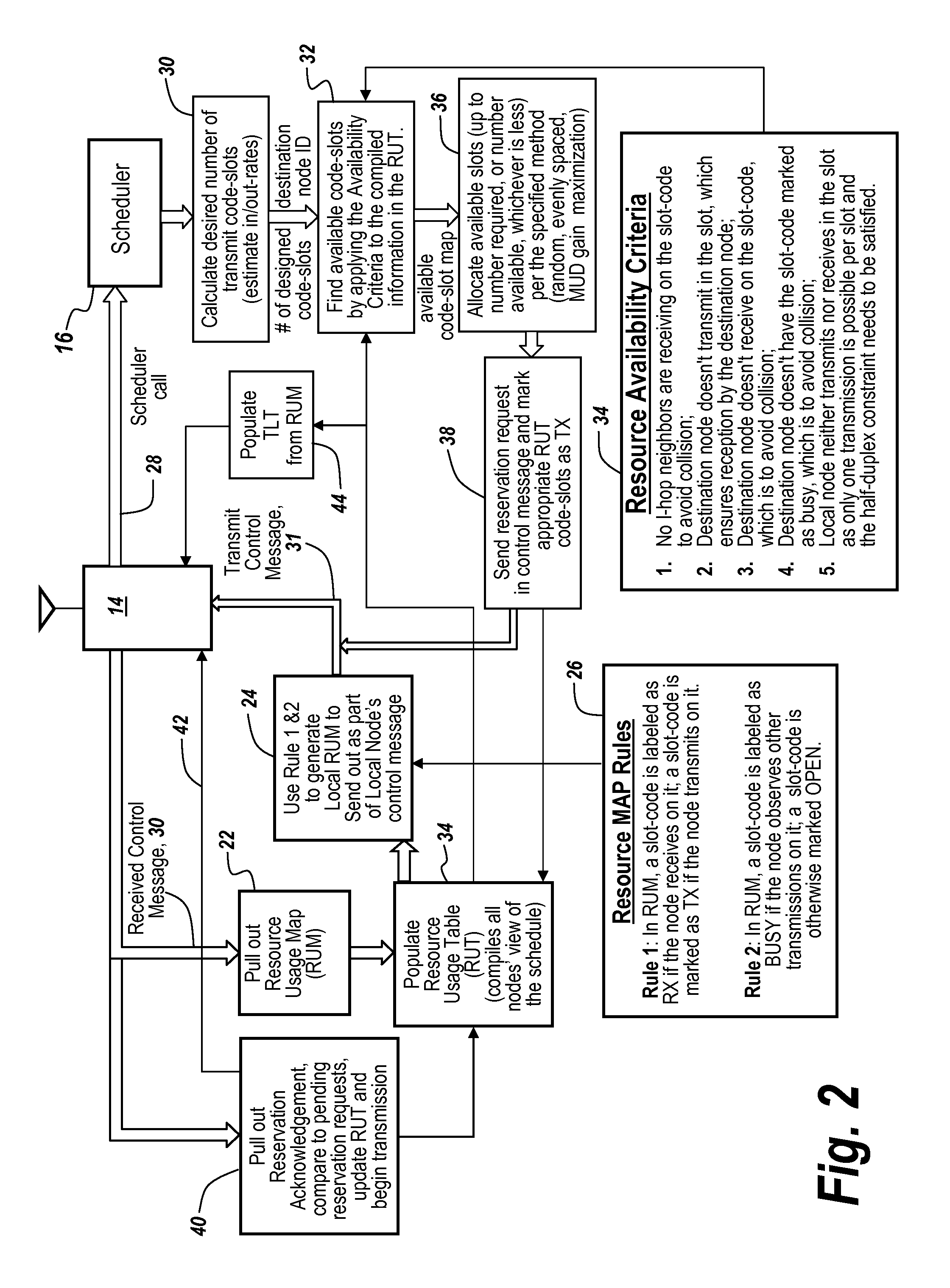Distributed scheduler design for multiuser detection enabled wireless mobile ad-hoc networks
a scheduler and wireless mobile technology, applied in the field of communication systems, can solve the problems of large processing power, inability to implement sophisticated high-level techniques involving maximum likelihood joint estimation of all user signals on handheld devices, and inability to achieve optimal joint detection on completely random transmissions. achieve the effect of maximizing channel reus
- Summary
- Abstract
- Description
- Claims
- Application Information
AI Technical Summary
Benefits of technology
Problems solved by technology
Method used
Image
Examples
Embodiment Construction
[0053]Referring now to FIG. 1, a multiuser detector enabled mobile ad-hoc network 10 is comprised of a number of nodes 12 at which a corresponding number of transceivers 14 are located. Each of the transceivers has coupled to it a scheduling module 16 under the control of an algorithm 18 that provides scheduling for transmission between a local node, namely the node that seeks to be a source node, and a recipient or destination node.
[0054]It is the purpose of the subject invention to provide scheduling for transmissions from one node to another so as to avoid conflict while at the same time using maximal use of MUD features.
[0055]It will be appreciated that each of the nodes has a transceiver which operates independently to schedule its own transmissions having received a control message from each of the other nodes on a control channel generally indicated by reference character 20.
[0056]What will be seen is rather than utilizing centralized control for the scheduling of transmissio...
PUM
 Login to View More
Login to View More Abstract
Description
Claims
Application Information
 Login to View More
Login to View More - R&D
- Intellectual Property
- Life Sciences
- Materials
- Tech Scout
- Unparalleled Data Quality
- Higher Quality Content
- 60% Fewer Hallucinations
Browse by: Latest US Patents, China's latest patents, Technical Efficacy Thesaurus, Application Domain, Technology Topic, Popular Technical Reports.
© 2025 PatSnap. All rights reserved.Legal|Privacy policy|Modern Slavery Act Transparency Statement|Sitemap|About US| Contact US: help@patsnap.com



